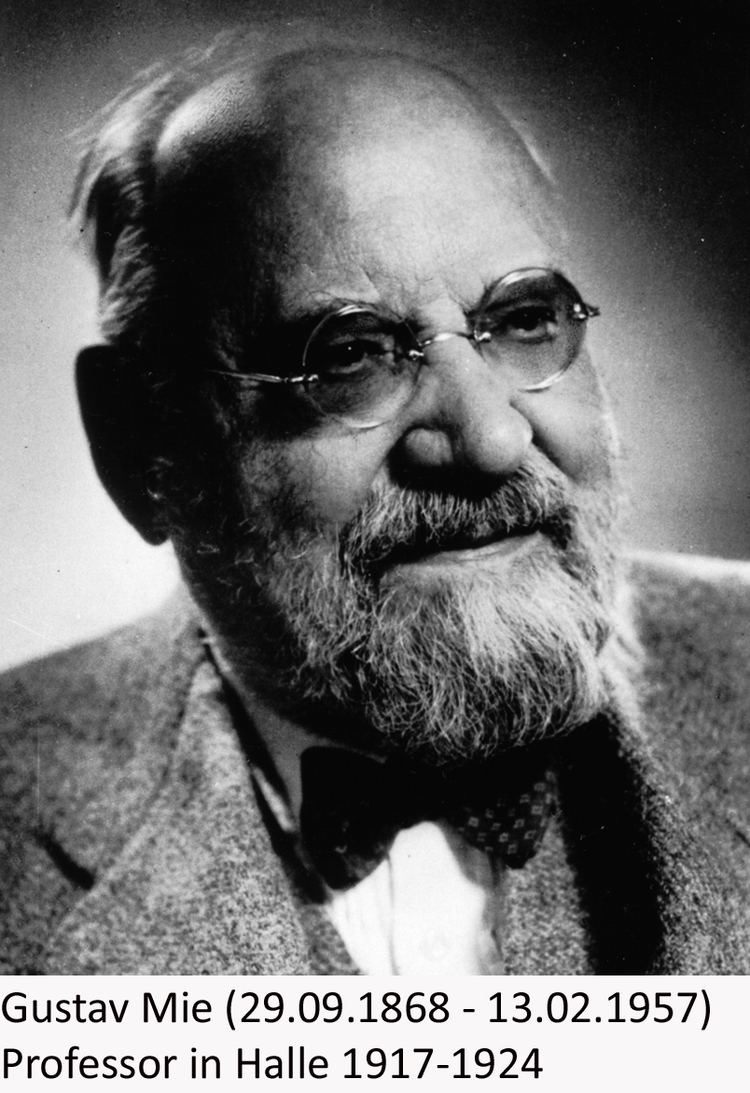Nationality German Residence Germany | Name Gustav Mie Fields Physicist | |
 | ||
Institutions University of GreifswaldUniversity of Halle-WittenbergUniversity of Freiburg Alma mater University of RostockUniversity of HeidelbergUniversity of Gottingen Education University of Gottingen, Heidelberg University, University of Rostock | ||
Gustav Adolf Feodor Wilhelm Ludwig Mie ( [miː]; 29 September 1868 – 13 February 1957) was a German physicist.
Contents

Life
Mie was born in Rostock, Mecklenburg-Schwerin, Germany in 1868. From 1886 he studied mathematics and physics at the University of Rostock. In addition to his major subjects, he also attended lectures in chemistry, zoology, geology, mineralogy, astronomy as well as logic and metaphysics. In 1889 he continued his studies at the University of Heidelberg and received a doctorate degree in mathematics at the age of 22.
In 1897 he got his Habilitation at the University of Göttingen in theoretical physics and in 1902 became extraordinary professor for theoretical physics at the University of Greifswald. In 1917 he became full professor for experimental physics at Martin Luther University of Halle-Wittenberg. In 1924 he became Professor at the University of Freiburg, where he worked up to his retirement in 1935.
In Freiburg, during the Nazi dictatorship, Mie was member of the university opposition of the so-called "Freiburger Kreis" (Freiburg Circles) and one of the participants of the original "Freiburger Konzil".
He died at Freiburg im Breisgau in 1957.
Work
During his Greifswald years Mie worked on the computation of scattering of an electromagnetic wave by a homogeneous dielectric sphere, which was published in 1908 under the title of “Contributions to the optics of turbid media, particularly of colloidal metal solutions” in "Annalen der Physik". The term Mie scattering is still related to his name. Using Maxwell's electromagnetic theory applied to spherical gold particles Mie provided a theoretical treatment of plasmon resonance absorption of gold colloids. The sharp absorption bands depend on the particle size and explain the change in colour that occurs as the size of the colloid nanoparticles is increased from 20 to 1600 nm. He wrote further important contributions to electromagnetism and also to relativity theory. In addition he was employed on measurements units and finally developed his Mie system of units in 1910 with the basic units Volt, Ampere, Coulomb and Second (VACS-system).
Honors
A crater on Mars was named in his honor, and also a building of the University of Freiburg carries his name.
